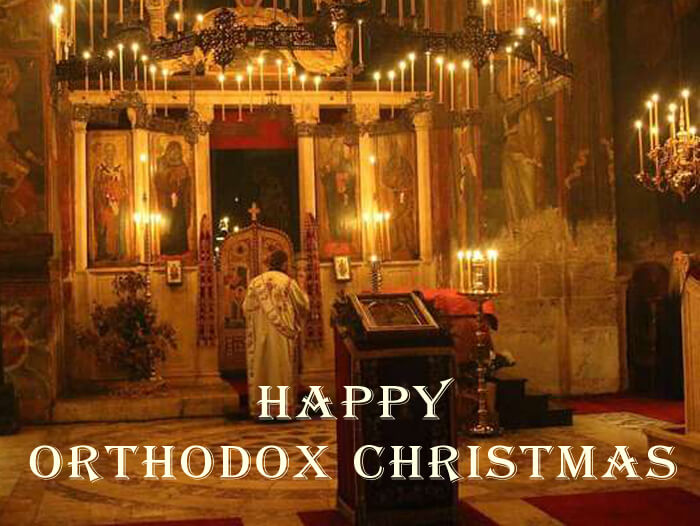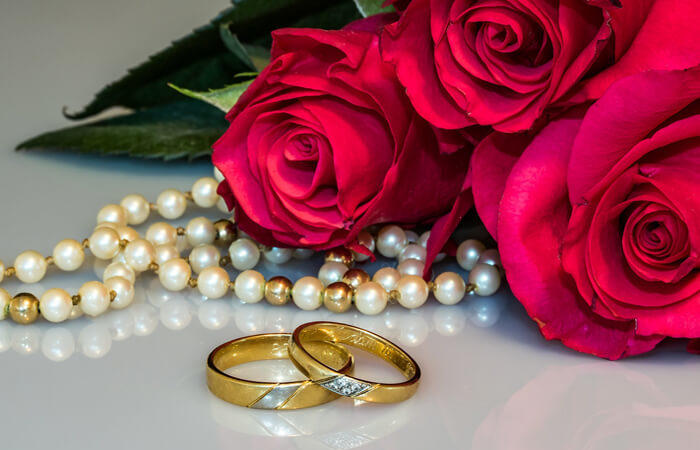Orthodox Christmas Day

Orthodox Christians celebrate Orthodox Christmas on January 7th when Jesus was born, while in the rest of the world it is celebrated on 25th December. The difference in the day the holiday falls on is due to the calendars used by the groups of Christians.
Western Christians follow the Gregorian calendar, on which December 25 is Christmas Day. For Orthodox or Eastern Christians who use the Julian calendar for religious purposes, December 25 is the same as January 7 on the Gregorian calendar. Julian calendar was created by Julius Caesar and is several days behind the Gregorian calendar.
The Catholic-created Gregorian calendar is used by most of the countries that observed Christmas on 25th December. While Orthodox countries like Russia, Eastern European countries, and the Middle east observe the Julian calendar, which pre-dates the Gregorian calendar, for a number of religious holidays and therefore Christmas is celebrated on January 7th.
History
Christians who celebrate Christmas on December 25 do so in accordance with the Gregorian calendar that was introduced by Pope Gregory XIII in 1582. Christians who celebrate Christmas on January 7, though, do so using the Julian calendar that was introduced by Roman Emperor Julius Caesar in 46BC.
The earth takes a little bit more than 365 days to make its journey around the sun. To be precise, it takes 365.24219 days. Communicating that celestial journey via a calendar is a bit tricky because here on earth, we experience life in 24 hour periods* – the amount of time it takes for the earth to rotate on its axis.
Given that the sun’s journey can’t be equally divided into days, a calendar that uniformly rounds every year up to 366 days or down to 365 days is not going to work if we want our calendar to mark the same point in the sun’s journey year after year.
To counter the extra 0.24219th of a day in the year on a calendar, before Julius Caesar was emperor, the Romans would add days in February every now and again. But it was all a bit messy, and the calendar started being used haphazardly for political advantage. So Caesar worked on a new calendar with astronomers from Alexandria, Egypt, and introduced it in 46BC – with a leap year every four years.
Unfortunately, the astronomers behind the leap year system got the 365.24219 measurements just slightly wrong – believing the earth’s journey around the sun to be 365.25 days. This equated to 11 minutes a year – time which added up as the years passed.
In fact, by 1577, when Pope Gregory XIII was the head of the Catholic Church, the calendar was around ten days out of sync with the solar year – and therefore out of sync with natural occurrences on earth including the vernal (spring) equinox and the winter solstice. Apparently, Gregory was annoyed because this meant that Easter, traditionally observed on March 21, fell further away from the spring equinox with each passing year.
To solve this problem, Gregory appointed physicist Aloysius Lilius and astronomer Christopher Clavius to figure out how to get it right. And in 1582 – after five years of extensive work – Gregory’s team of experts announced a plan to tweak the system of leap years.
They proposed to hold the 366-day year every four years, except on the years that weren’t divisible by 400 (i.e. have a leap year in the year 2000, but don’t have one in 1700, 1800, or 1900). This changed the length of the average year to 365.2425 days – which means the calendar is 26 seconds off each solar year but is much closer.
And those extra ten days they were already out? They were to be literally deleted, with Thursday 4 October 1582 followed by Friday 15 October 1582.
So, to make a long story short, the global calendar switch-over took about 300 years and involved protests and all sorts of resistance. Pope Gregory got Roman Catholic countries like Italy, France, Spain, and Portugal onboard easily, but European Protestants initially would not have a bar of this Catholic intrusion.
So while the Gregorian Calendar was first introduced in 1582 – and adopted by (most of) France, Italy, Poland, Portugal, Spain – the United States and the United Kingdom both didn’t accept it until 1752.
Despite the eastern European country’s civil administrations’ acceptance of the Gregorian calendar, none of the national Eastern Orthodox Churches adopted it for using it to set dates for church or religious events.
Celebrations of Orthodox Christmas
The week before Jan. 7, people clean their homes because they want to welcome Jesus into a clean space. They also put down straws in their homes and the church because it symbolically keeps Jesus warm just as it did thousands of years ago. Many Orthodox Christians fast for forty days before Christmas Day. The Christmas festivities start on the evening of 6 January and continue for almost two weeks until Epiphany (Gregorian: 19 January). The fast typically lasts until after the evening worship service or until the first star appears. Christmas Eve dinner is meatless but festive. This “holy supper” is the central tradition of the Christmas Eve celebration.
January 6th is Christmas Eve for the Orthodox Church. Christmas is a joyous day that starts with families attending church. They dress up and go to church and pray. Churches offer services starting before midnight on Christmas Eve and on Christmas morning. After praying, they break their fast by eating all together and giving thanks for another year. January 7th is Christmas day, that’s when the gifts are opened, and people get together and celebrate.
A lot of people don’t know the Orthodox Christmas exists and it’s very much not acknowledged by school systems or workplaces for those who are celebrating the holiday.







